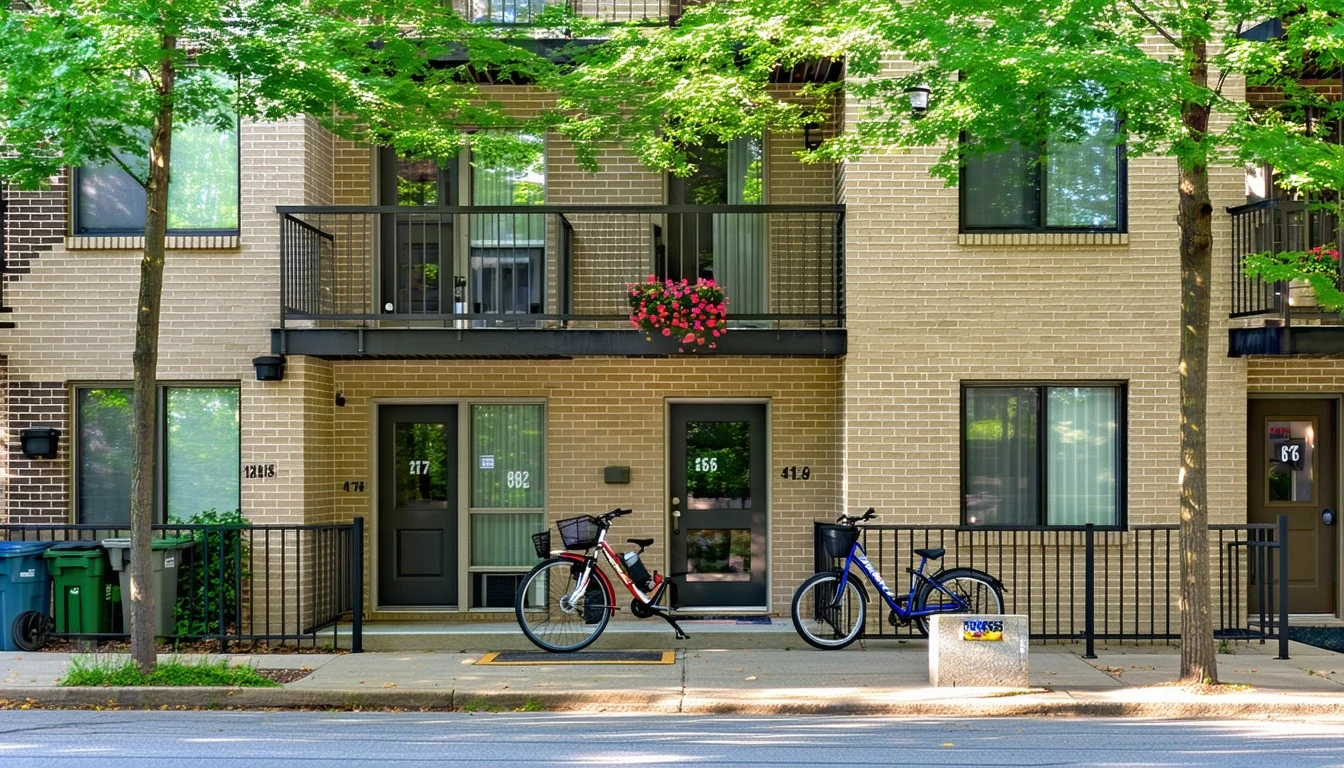
Washington, DC vs. Silver Spring, MD: Cost of Living Comparison (2025)
When considering a move to the Washington, DC metro area, many people find themselves comparing the cost of living between Washington, DC proper and nearby suburbs like Silver Spring, MD. While Washington offers the excitement and amenities of a major city, Silver Spring provides more space and a suburban lifestyle just over the border. As of 2025, the cost of living remains a central factor for those deciding between the two.
For families seeking room to grow, Silver Spring’s larger homes and yards may be appealing. Young professionals, on the other hand, might prefer being in the heart of the action in Washington and prioritize walkability over square footage. Ultimately, the choice often comes down to housing costs, transportation expenses, and which location best fits your budget. Let’s dive into the key differences.
Housing Costs: Renting vs. Buying in Washington and Silver Spring

Housing is typically the biggest expense for households in the DC metro area. As of 2025, median home prices in Washington, DC are around $750,000, while Silver Spring hovers closer to $550,000. For a standard 3-bedroom single-family home, expect to pay roughly 25-30% less in Silver Spring.
Rents follow a similar pattern, with a typical 2-bedroom apartment going for about $2,800 per month in Washington compared to $2,200 in Silver Spring. Keep in mind that prices can vary significantly by neighborhood. Trendy areas like Shaw or Logan Circle in DC command top dollar, while more affordable pockets exist in both cities for those willing to look.
Availability also impacts costs. Washington has a higher proportion of newer apartment buildings and luxury rentals, while Silver Spring offers more single-family homes. This means renters may have an easier time finding deals in Silver Spring, but homebuyers face a competitive market on both sides of the border.
| Housing Type | Washington, DC | Silver Spring, MD |
|---|---|---|
| 2-BR Apartment (Monthly Rent) | $2,800 | $2,200 |
| 3-BR House (Median Price) | $750,000 | $550,000 |
For a family of four looking to buy, Silver Spring’s lower home prices could translate to significant savings over a 30-year mortgage. A young professional open to renting may find better value in DC’s many apartment options. Of course, space and location factor in heavily.
Overall, Silver Spring comes out ahead on housing costs for most home types and sizes. Families in particular can get more for their money in the Maryland suburbs.
Utility Bills and Energy Expenses
Utility costs don’t differ too drastically between Washington and Silver Spring, as both share the same regional electric and gas providers. However, home size and age play a role. Silver Spring’s larger, older houses may be less energy-efficient than DC’s newer apartment stock.
In a typical 2-bedroom apartment, monthly utility bills average around $180 in Washington and $200 in Silver Spring. For a 3-bedroom single-family home, those figures rise to roughly $280 and $330 respectively. Expect higher heating and cooling needs in Silver Spring’s more spacious dwellings.
Both cities offer energy-saving programs and audits to help residents trim costs. Pepco, the electric utility serving Washington and Silver Spring, provides free home energy assessments and rebates for efficiency upgrades. Making strategic improvements can help offset utility expenses, especially in older homes.
With all factors considered, Washington squeaks ahead on monthly utility bills thanks to its more compact, energy-efficient housing options. However, the difference is minor compared to housing costs.
Putting Food on the Table: Grocery and Restaurant Prices
Feeding a family is a major line item in any household budget. As of 2025, grocery costs in Washington and Silver Spring are fairly comparable, with a slight edge to Silver Spring.
A gallon of milk runs about $4.50 in DC compared to $4 in Silver Spring, while a loaf of bread is roughly $3.80 versus $3.50. Weekly grocery bills for a family of four average around $275 in Washington and $250 in Silver Spring, assuming a mix of cooking at home and occasional restaurant meals.
Dining out is pricier in Washington, where trendy restaurants and foodie hotspots command premium prices. A typical sit-down dinner for two in DC might cost $80-100, while Silver Spring offers more affordable options in the $50-70 range. Of course, both cities have their share of cheap eats and splurge-worthy spots.
For grocery staples and everyday dining, Silver Spring residents can expect to save around 10% compared to their DC counterparts. Frequent restaurant-goers, however, might rack up bigger bills in the district.
Taxes and Fees: Which City Takes a Bigger Bite?
Taxes are an often-overlooked aspect of the cost of living equation. As of 2025, Washington, DC residents pay a progressive income tax ranging from 4% to 8.95%, while Maryland’s state income tax runs from 2% to 5.75%. Montgomery County, where Silver Spring is located, tacks on an additional 3.2% local income tax.
Sales taxes are 6% in both cities, but Washington imposes higher taxes on alcohol and tobacco products. Property taxes are also steeper in DC, with an effective rate of 0.56% compared to Silver Spring’s 0.41%. For a $500,000 home, that’s a difference of $750 per year.
Other nickel-and-dime expenses add up too. Parking is notoriously expensive in Washington, with monthly garage rates topping $300 downtown. Silver Spring offers more free and low-cost parking options. However, Maryland charges an annual vehicle excise tax and higher gas taxes than DC.
Income taxes tend to be lower for most earners in Silver Spring, while Washington’s higher property taxes can squeeze homeowners. Car owners may save on parking in Silver Spring but pay more in other vehicle fees. The overall tax picture slightly favors Silver Spring.
Lifestyle Factors That Affect Your Budget
Crunching the cost of living numbers is only part of the equation. Lifestyle factors play a big role in how far your dollar stretches. Washington’s walkable neighborhoods and extensive Metro system mean many residents can forgo car ownership, potentially saving thousands per year. Silver Spring is more car-dependent, but offers ample free parking and easy access to nature.
Cultural attractions like museums and performances tend to be pricier in Washington, but the city offers a wealth of free activities, from Smithsonian museums to outdoor concerts. Silver Spring’s more suburban vibe means cheaper entertainment options, like movie theaters and bowling alleys, are more plentiful.
For families with children, childcare costs are a major factor. As of 2025, full-time infant care averages over $2,000 per month in Washington compared to around $1,600 in Silver Spring. School quality is another consideration, with both cities boasting strong public school systems but also a range of pricey private options.
Ultimately, the lifestyle that fits your budget best depends on your priorities. Urbanites may find Washington’s higher costs worth it for the city’s rich amenities and car-free living. Families and nature lovers may get more bang for their buck in Silver Spring’s roomier homes and green spaces.
Washington vs Silver Spring Cost of Living: 2025 Snapshot
| Cost Factor | Washington, DC | Silver Spring, MD |
|---|---|---|
| Housing (3BR Home) | $750,000 | $550,000 |
| Utilities (Monthly, 2BR Apt) | $180 | $200 |
| Groceries (Monthly, Family of 4) | $1,100 | $1,000 |
| Transportation (Monthly Pass) | $120 | $90 |
| Taxes (Income, Property, Sales) | Higher | Lower |
| Childcare (Monthly, 1 Infant) | $2,000+ | $1,600+ |
| Estimated Monthly Total | $5,500 – $6,500 | $4,500 – $5,500 |
Estimates reflect 2025 costs for a professional couple with one child in a 2-bedroom apartment or a family of four in a 3-bedroom home. Totals are based on average housing, utility, food, transportation, healthcare, childcare, and discretionary spending data from the Bureau of Labor Statistics and other government sources. Tax estimates factor in typical income, property, and sales tax rates for each location. Actual expenses will vary based on lifestyle and spending habits.
Based on these figures, a typical family could save $1,000 or more per month living in Silver Spring compared to Washington, DC. Over the course of a year, that adds up to $12,000+ in potential savings. For higher-income households, the gap may be even wider.
Choosing Between Washington and Silver Spring: Key Considerations
For many people, the choice between Washington and Silver Spring comes down to space versus convenience. Washington’s dense urban neighborhoods put work, play, and amenities all within reach, often without needing a car. The tradeoff is smaller living spaces and higher housing costs.
Silver Spring’s leafy streets and larger homes offer room to spread out, often at a lower price point. But the more suburban lifestyle means more time in the car and less walkability. For those who can swing it, a happy medium may be living in Silver Spring while working in DC, combining cheaper housing with a higher city salary.
Ultimately, the best choice depends on your budget, lifestyle, and long-term goals. Renters and first-time buyers may find better value in Silver Spring, while committed urbanites may be willing to pay a premium for Washington’s big-city perks. As remote work becomes more common in a post-pandemic world, the calculus may shift even further in favor of cheaper suburban living.
Frequently Asked Questions
Is it cheaper to live in Washington, DC or Silver Spring, MD?
As of 2025, Silver Spring, MD is generally cheaper than Washington, DC, particularly when it comes to housing. A typical family can save $1,000 or more per month living in Silver Spring compared to a similar lifestyle in DC.
How much do I need to make to live comfortably in Washington, DC in 2025?
To live comfortably in Washington, DC in 2025, a family of four would need a household income of at least $150,000 per year before taxes. Couples and singles can get by on less, but should budget at least $75,000-$100,000 annually for a middle-class lifestyle.
What salary do you need to live in Silver Spring, MD?
As of 2025, a family of four would need a pre-tax household income of around $120,000 per year to live comfortably in Silver Spring, MD. Couples can live well on $75,000-$90,000, while singles should aim for at least $50,000-$60,000 per year.
Is Silver Spring, MD a good place to live?
Silver Spring, MD is a great place to live for families and professionals who want more space and a suburban lifestyle while still being close to the action of Washington, DC. The city boasts strong schools, ample parks and recreation, and a diverse community feel.
What are the best affordable neighborhoods in Washington, DC?
As of 2025, some of the best affordable neighborhoods in Washington, DC include Petworth, Brightwood, Brookland, and Fort Totten. These areas offer relatively cheaper housing options and a more residential vibe while still providing easy Metro access to downtown DC.
Making the Move: Washington or Silver Spring?
Whether you choose bustling Washington or tranquil Silver Spring, both cities offer a high quality of life and easy access to the DMV region’s many perks. Budgeting for the cost of living in Washington or Silver Spring ultimately comes down to your priorities and stage of life.
If you’re ready to make the leap, be sure to factor in moving costs and plan ahead. Consider whether professional movers or a DIY approach makes more sense for your budget and timeline. And don’t forget to account for any changes in monthly expenses like transportation or childcare in your new location.
Whichever side of the DC-Maryland border you land on, you’ll be joining a vibrant and diverse community with no shortage of opportunities. Welcome home!
